Scott Hamilton – 8 April, 2018
Unlike the inhabitants of the contemporary West, Tongans take art very seriously-–no important social event in their kingdom is complete without music, poetry, dance, and the exchange of barkcloth paintings. Seleka has caused bemusement and outrage, because its methods and products seem to flout all of the conventions of Tongan art. The kingdom’s poets and painters traditionally seek the protection and patronage of nobles and kings, and try to create the harmonious patterns of images and sounds that Futa Helu had so admired. Seleka, by contrast, works autonomously, and makes art full of chaos and anger and humour.
Last year one of the world’s most famous actors visited a lagoonside shack in Tonga to drink kava with a group of local artists. Sam Neill is just one of a series of palangi to have made a pilgrimage to the fale of the Seleka Art and Kava Club. Since the club was founded in 2008 artists writers, musicians, and sociologists from Australasia, America, and Europe have sat with the Selekarians, as club members call themselves, to drink and paint and laugh and (in my case) make earnest notes.
The Selekarians have made their own journeys. They have enjoyed residencies at New Zealand and Australian universities, have been invited to conferences and festivals across the Pacific, and have published and exhibited their paintings and drawings across Australasia.
Two months ago Cyclone Gita blew across the flat motu of Tongatapu, bending coconut trees and breaking fale. Seleka’s clubhouse was levelled.
A week or so after Gita, Mike Hosking used his column in the New Zealand Herald to question whether Kiwis should help Tongans rebuild their country. New Zealand gets nothing from Tonga, Hosking complained. Why should we give them anything?
Some of New Zealand’s best artists disagree with Hosking. Andy Leleisi’uao, Julian Hooper, Michael Smither, Benjamin Work, Dagmar Dyck, the prodigal Ercan Cairns, and a dozen other artists donated work to a resplendent exhibition called Shine on Seleka at Small Axe Studio in Onehunga. Nearly every work hung at Small Axe sold, and thousands of dollars were raised to help pay for the rebuild of that clubhouse by the lagoon.
*
When I looked at the works in Small Axe, I remembered my first visit to the Seleka Club, in 2013.
I remembered standing at the crossroads in Havelu, a village on the southern outskirts of Nuku’alofa, the Kingdom of Tonga’s capital and only city. It was a Saturday evening, and the market beside the crossroads was closing. A few fruits and vegetables - undersized kumala, paw paw leaking black seeds—lay unsold on blankets. Women turned prematurely grey by the roads’ coral dust lifted the blankets, folded them, and threw them onto the backs of patched-up utes. The unsold produce landed next to the bodies of children, who had clambered aboard and fallen asleep after a day’s work in the sun. The utes drove slowly off, wallowing in one pothole after another, through the intersection and away from town, down roads where lamp posts were replaced by coconut trees.
As I walked through Havelu, smoke from dozens of open fires mixed with the coral dust in my nostrils. Piglets turned on thin sticks above the fires. The suburb’s streetlights were dark but noisy: flying foxes squeaked and teetered on their summits, beside smashed bulbs. I walked in the light that spilled from a series of squat, corrugated iron shops, where Chinese men and women sat behind metal grilles with the blank expressions of bored toll booth operators.
Following the directions a Selekarian had given me over the phone, I turned down an alley towards the lagoon. A gang of dogs followed me, whining and barking with the curious mixture of pathos and menace I had come to expect from Nuku’alofa’s wildlife. One of the dogs had a red-scabbed stump instead of a tail; another limped at the back of the pack, trailing a broken paw in the dust.
I could hear Fanga’uta lagoon lapping at the end of the lane, see moonlight lying on the water like the scales of dead fish. Tongatapu’s hospital is named Vaiola, after a legendary pool that bestows eternal health on anyone who bathes in it. But the modern Vaiola pumps its chemical waste into the lagoon, killing the creatures there.In the distance I could see a black peninsula lurching into the lagoon. It was the home of Longoteme, the village where Ans Westra shot her first book of photographs, Viliami of the Friendly Islands, in 1963.
Westra was disappointed by Tonga. She had expected a primordial paradise, where the indigenes lived without rank or clothing, and found instead a hybrid, complexly hierarchical society where pagan chiefs had refashioned themselves as lords and barons, and where an ultra-conservative brand of Wesleyanism somehow tolerated kava, alcohol, feasting and constant extra-marital sex. Many of the images Westra made in Longoteme offer self-consciously remote views of Tongan life. Like a sniper or a scout, Westra looked at the people of the village from a distance, without apparent emotion.
Near the end of the alley I found a breezeblock building filled with bright light. A dozen men, most of them elderly, sat in a circle around a kava bowl. The men wore the waist-mats Tongans call ta’ovala and the skirts the islanders call tupenu. A teenage girl knelt beside the bowl with a ladle in her lap.
One of the drinkers turned towards me. He wore the light blue jacket of the Free Wesleyan Church, and when he opened his mouth to speak I saw a strange mixture of gold teeth and rotten stumps.
‘Malei. Come. Drink with us.’ He pointed to an unoccupied piece of the dirty mat that covered half of the concrete floor of the kava club. I stepped through the club’s open door.
‘Malo’ I said. ‘I’m looking for the Seleka Club. Is this it?’
Giggles and snorts rippled around the kava circle.
‘Why would you want to see those shitheads?’ the man in the blue jacket asked.
‘Well, I was interested in their art.’
‘Their club is the shit club. They have shit for brains, they drink shit, and they paint shit.’
I knew that the Seleka Club was unpopular with some Tongans—I’d met an elderly man in a café in central Nuku’alofa who’d boasted of buying Selekarian artwork and then taking it home to burn, as a sort of apology to god. But I was surprised by the language of the man in the blue jacket. I was about to walk away when he softened his voice.
‘They’re on the other side of the road, right beside the water.’
‘Malo. Malo aupito.’ I stepped back outside, and found my honour guard of mongrels waiting.
The Seleka clubhouse was a rectangular shack made with roughly cut lengths of wood. A dozen or so old tyres kept its roof of bamboo and coconut fronds and pandanus leaves from sliding into the lagoon. As I stood at the door of the club I could hear music—not the gentle singalongs common in Tongan kava clubs, but the skittering electronic beat of dubstep, filtered through a dodgy amp.
Inside a disco ball hung from the ceiling; its colours flew onto the walls, and blended with the psychedelic calligraphy and pictures that hung there. Smoke and the smell of bootleg Tongan tobacco filled the air. A long table ran down the centre of the clubhouse; it was covered in the ruins of a meal of banana, watermelon, pawpaw, and fried chicken, as well as with kava cups and messy paintbrushes and bleeding tubes of paint.
A white plastic bucket sat at the centre of the table. The lid of a toilet bowl had been fitted around the top of the bucket. The kava inside the bucket had been dyed purple. I heard a high-pitched sound, and saw a young man with an Afro and a bad case of acne ringing the sort of call bell that belongs on the counter of a store. ‘Pass the ta’e!’ the young man shouted, grinning at me. My Tongan vocabulary was limited, but I knew that ta’e was the word for excrement. I saw a cup of purple liquid being passed from hand to hand down the table, towards the teenager with the Afro.
A slightly older man rose from the table, and walked toward me, looking solemn.
‘Malei’ he said.
‘Malei. I wanted to visit the Seleka Club.’
‘You are visiting the Seleka Club.’
‘My name is Sikoti, and —‘
‘Tuku ‘ia! Stop! You can’t say your name here!’
‘Oh. Kataki fakamolemole. I’m really sorry.’
‘That’s OK. It’s one of our customs. If you want to drink with us, you must choose a new name, a club name.
‘Fair enough. What’s your club name?’
‘My name is China Bitch.’ My interlocutor was smiling proudly.
China Bitch sat me at the table, brushed away a gutted pawpaw, and introduced me to Buddha, whom he called the founder and unofficial leader of the Selekarians. I recognised Buddha as Tevita Latu, Tonga’s most controversial painter. Latu had a huge head and a long and turbulent beard, which was flecked with paint. His voice was soft but his language was precise. ‘We must give our guest a name. Sipi’i seems suitable. How does our visitor like it?’
‘I’m sorry, ta’e mahino faka Tonga. I have no idea what the name means.’
‘That doesn’t matter.’ A slow grin appeared from the depths of Latu’s beard. ‘Do you like it or not?’
‘I guess so’ I said. I didn’t want to seem vain, or querulous. ‘Sipi’i is fine.’
‘Great. China Bitch will draw your name and add it to our wall. When he has finished you will be a Selekarian. Our club has only two rules: do not fight and do not steal. Do you agree to follow those rules?’
‘Of course. Though, come to think of it, what if I write about you, about the club’s art - does that count as theft?’
‘Depends what you write.’ Buddha smiled again, and someone passed me a cup of kava from the bowl with the toilet lid.
‘By the way’ China Bitch whispered, ‘Sipi’i means slap.’
For the rest of the night Tevita Latu and I drank and talked. He told me about his career as an artist, and about the origins of the Seleka Club.
Latu came from an important family in Havelu. He studied art in Australia and earned a couple of degrees, but decided to return to his homeland rather than seek citizenship and a career abroad.
Latu arrived back in Tonga just in time for a revolutionary crisis. In 2004 the kingdom’s civil servants staged an epic strike and occupied a part of downtown Nuku’alofa; in 2005 twenty thousand people, one fifth of the nation, marched through the capital to demand an end to the monarchy’s control of politics, and a permanent protest camp was established outside the royal palace. Latu joined the protests, and began to adorn the walls of Nuku’alofa with graffiti, which he signed with the name Ezekiel.
When a pro-democracy march turned into a riot in 2006, the world’s television screens showed Ezekiel slogans like Democracy not Hypocrisy and The Nu Face of Youth Rebellion on the walls of burning looted buildings. (Latu was himself was not involved in either the riot or the march that had preceded it. On the day of the violence he had been due to open his first art exhibition, in a conference centre near the middle of Nuku’alofa. As the rioters and the flames got closer and closer, he took down the paintings he had just hung on the centre’s walls, and dragged them back to the safety of Havelu.)
The young artist was fighting aesthetic as well as political battles. After returning to Tonga he had gotten a job at ‘Atenisi, the impoverished but influential university founded by the legendary polymath Futa Helu. ‘Atenisi was the Tongan word for Athens, and Helu, who had studied philosophy and classics and a slew of other subjects at the University of Sydney, had dreamed of creating a sort of Greek academy in the South Pacific, where teachers and students would dialogue around a kava bowl rather than a wine bowl.
Helu had written authoritatively about Tongan art. He saw a parallel between traditional Tongan barkcloth painting, dance, and song, with their intricate symmetries and repetitions, and the art of ancient Greece. Art existed, Helu said, ‘to perfect life’.
But the young Tevita Latu was uninterested in the symmetry and order that Helu’s classical aesthetics prioritised. In Australia Latu had developed a style that combined Cubist distortions of space with an Expressionist use of colour and form to convey emotion. He gave the figures on his canvases grotesque faces and convulsive movements, and surrounded them with the black, turbulent lines he had learned from Egon Schiele.
Helu and Latu argued around ‘Atenisi’s kava bowl, but they did not achieve the tidy resolution of differences we find at the end of some Platonic dialogues. With his usual generosity, Helu invited his young critic to paint the walls of a concrete building ‘Atenisi had recently raised for its art students. Latu responded with a series of mutant, transmogrifying figures, beasts with claws and fangs and suppurating wounds, creatures who filled the speech bubbles that escaped from their orifices with fragments of Nuku’alofa’s pidgin English-Tongan street slang.
‘Futa didn’t understand what Tevita was doing at all, and Tevita didn’t get where Futa was coming from either’ Paul Janman told me. Janman had taught at ‘Atenisi alongside Latu, and later made Tongan Ark, an acclaimed film about Futa Helu’s life and death. ‘Futa wanted to talk about Aristotle’s aesthetics, about the beautiful dances of ancient Tonga; Tevita was interested in Basquiat, in street art. It’s so sad that they didn’t connect.’
By 2006 Latu had left ‘Atenisi. In 2008 he held the first session of the Seleka Club. The club’s name was an anagram of kasele, the Tongan word for toilet. The club’s scatological imagery, the strange names it gave to its members, and the loud music it played baffled older Tongans, and attracted young people. Dropouts from Nuku’alofa’s high schools found their way to the clubhouse, where they drank kava rather than alcohol, and painted or made music rather than smoked amphetamines. Latu may have quarreled with Futa Helu, but by 2013 he had become, like the young Helu in the 1960s and ‘70s, a leader of youth and a beacon of liberalism in a conservative society.
*
I had visited the Seleka Club after encountering Latu’s paintings at Langafonua, a craft and art cooperative that had run a gallery-store in downtown Nuku’alofa since the 1950s. Langafonua was filled with barkcloth paintings and carvings, made with more or less technical skill, but made for palangi, and made using imagery cribbed either from a calcified tradition or from the West. Langafonua had dolphins that reminded me of Disney films; Langafonua had acres of barkcloth covered in over-familiar images: crowns, flying foxes, Norfolk pines.
Latu’s paintings were hanging in a niche at the back of Langafonua; a few metres of bare shelves created a sort of cordon sanitaire around them. Pigs Killed in the Name of God showed a group of men preparing to feast on puaka at one of Tonga’s interminable and gluttonous church conferences. The men were short and bald, and had mean expressions on their faces; the creatures they held aloft on spit-sticks were massive, and covered in exquisite abstract patterns that recalled both the delicate, recalcitrant tapa of Samoa and the Aboriginal rock art Latu had studied during his years in Australia. Despite their size and stillness, the pigs seemed strangely graceful.
The pig has often been a symbol of uncleanliness in the Friendly Islands. One of the first laws made by Tupou I, the founder of modern Tonga, called for the fencing in of the animals, so that they could not wander through and despoil villages. When Tupou I’s Wesleyan army overran the pagan villages of Tongatapu, it desecrated the abandoned temples of its enemies by letting pigs run through them and graze in their grounds. In Pigs Sacrificed in the Name of God, Tevita Latu had made a despised creature beautiful, and shown the ugliness of that creature’s slayers.
Another painting I saw at Langafonua was called Storming the Gates of Bedlam. It showed a series of Picassoid figures convulsing in agony, or exultation. ‘That was a portrait of some of the psychiatric patients who drink kava with us,’ Latu told me at the Seleka Club. ‘Some of them come here as outpatients—they see us as an accepting place. But we’ve also drunk kava at the psychiatric unit in Vaiola—the doctors there invited us. They think art and kava are ways to calm the mind.’
By 2013 Seleka was beginning to attract attention from Tonga’s more progressive civil servants, and from non-governmental organisations. In the years ahead Latu and his comrades would become involved in a series of public projects. They would paint murals in the children’s ward of Vaiola hospital, and decorate Nuku’alofa’s rubbish bins; they would compose songs and posters for festivals held to protest corruption and raise environmental awareness; they would decorate a community kindergarten.
While I talked with Latu, aka Buddha, China Bitch had been drawing my new name in large, italicised yellow letters. ‘We draw every club member’s name and put it on a wall’ Latu told me.
‘Should I be offended that you’ve called me Sipi’i?’ I asked Latu. ‘Doesn’t it mean Slap?’
‘It doesn’t quite mean Slap’ Latu said gravely. ‘You could probably translate it more accurately as Bitchslap.’
‘What about China Bitch?’ I asked. ‘How did he get that name?’
‘He’s somewhat yellow, isn’t he?’ Tevita said evenly. ‘But you shouldn’t take everything so literally, Sipi’i. We’re Tongans.’
I remembered the concept of heliaki, which governs Tongan classical poetry as well as small talk at kava clubs. A poet or gossiper will say one thing, and mean another, and challenge listeners to sort what is genuine from what is a joke.
I told Latu about the old man who was buying and burning his work. ‘That’s a tribute’ he said. ‘To be hated - that’s a tribute. The Nazis burned books they feared. The missionaries, the converts, they burned statues of the old gods. A lot of my paintings attack corruption, in politics and religion. I do not go to church. I do not support the king.’ He smiled. ‘And sometimes people dislike what I wear.’ Latu was infamous in Nuku’alofa for the T shirts he designed and donned. I’d seen him stop by an ‘Atenisi kava circle wearing a shirt that bore the words God’s busy. Want to talk to the Devil instead?
*
As I sat in the Seleka clubhouse talking with Tevita Latu I felt more and more excited. A tingling began in my feet, ran up my legs and through my groin, entered my arms. My head was light. I waved and smiled at Selekarians up and down the table, with the undiscriminating friendliness of a child.
It wasn’t just Tongan kava that had intoxicated me. I was thinking back to my teens, to high school Art History classes, to the elderly teacher who gave us dogeared photocopies of The Futurist Manifesto, and played us flickering clips of Dadaist and Surrealist films. Our teacher talked about the tumult that avant-garde art once created, about the riot started by the premiere of Nijinsky and Stravinsky’s Rite of Spring, about the banning of ‘obscene’ modernists like James Joyce.
I understood, even as a teenager, that the avant-garde belonged to the past. With their excitement over objects as commonplace as motorbikes and trains, their belief that a revolution in art could create a revolution in life, and their foppish and colourful costumes, the avant-gardists of early twentieth century Europe seemed quaint, even fusty. They were charming, in the old-fashioned way a gramophone or Model T Ford is charming.
At the end of the twentieth century there were artists and writers and musicians who tried to provoke, even shock, the public, but they could never create the consternation their forebears had stirred. Western societies like New Zealand had recuperated and institutionalised innovative art. There were spaces—austere galleries, fringe theatres, seedy bars with stages in their beer gardens—set aside for ritualised provocation. The public expected contemporary art, or at least a segment of contemporary art, to be incomprehensible, or unpleasant, or both, but art was no longer central to society. Art had become an exotic recreational activity, like surfing or tai chi, that one might or might not take up, but it did not demand, through its very existence, attention, and interpretation, and judgement.
Now I realised that I had found, in Tonga, in 2013, a genuine avant-garde movement, an heir to Dadaism, to Surrealism, to the other aesthetic irruptions of the early twentieth century. Unlike the inhabitants of the contemporary West, Tongans take art very seriously—no important social event in their kingdom is complete without music, poetry, dance, and the exchange of barkcloth paintings. Seleka has caused bemusement and outrage, because its methods and products seem to flout all of the conventions of Tongan art. The kingdom’s poets and painters traditionally seek the protection and patronage of nobles and kings, and tried to create the harmonious patterns of images and sounds that Futa Helu had so admired. Seleka, by contrast, works autonomously, and makes art full of chaos and anger and humour. I suddenly understood what Tevita Latu had meant, when he called the burning of his paintings a tribute.
The sun was emerging from coconut plantations and lighting the lagoon by the time I left Seleka’s clubhouse. The Selekarians had finally put down their kava cups and brushes. Some of them had wandered off to family fale; others had unrolled sleeping bags, or lain down without blankets on the clubhouse’s hard floor.
Outside the clubhouse I could see the brightly painted truck, a Tongan version of Ken Kesey’s magic bus, that members drove to Tongatapu’s remote villages. ‘We jump out of the truck, we might be dressing up, or have painted faces, we might sing or dance if we have the energy, we try to sell our art, especially if we see palangi around’ Latu had told me. ‘Some people see us, and they call us ‘fekai’, savages, or ‘haua’, bums. We painted those words on our truck. We treat insults as honours.’
*
A couple of days after my visit to Seleka I shared some kava with a Tongan neighbour and friend, in the hall of his Free Wesleyan church. The hall was bare and bleak. There was no disco ball, no toilet lid, no art.
My friend had been a missionary in Africa. He’d helped build a flour mill in a Sudanese village; he’d sung from his Tongan hymn book to bemused locals; he’d walked into the desert to pray, and imagined his Polynesian syllables drifting over saltbrushes and up to heaven.
My friend hated the Seleka Club.
‘They seem to be doing some good work’ I told him, rather timidly. ‘They’re getting kids off drugs.’
‘And getting them addicted to another drug!’
‘But you drink kava, too.’
‘I don’t drink it from a bowl with a toilet lid! Look what they’ve done to our sacred national drink! And they let crazy people, and fakaleiti, and even women drink from their bowl!’
‘They’re very ingenious’ I said, in a low, hopeless voice. ‘They’ve made a remarkable clubhouse out of rough wood they salvaged.’
‘They should go to church instead of that place.’
My friend saw Seleka as an alien arrival in Tonga, a Western import that might prove as dangerous as those other new scourges, internet porn and ouija boards. But it seemed to me, the outsider, that Seleka was, despite its idiosyncrasies and its borrowings from the West, a strangely Tongan institution.
Seleka’s clubhouse was a unique piece of architecture, but it seemed nevertheless to belong to a local tradition. In Tonga and many other Pacific societies, reforming religious and political movements have often separated their followers from the rest of society, and gathered them in buildings that represent their guiding ideology.
Sia’atoutai, the Wesleyan school of theology where my friend had studied, isolated its students in the countryside, and recreated the geography of the Bible symbolically. The school’s seven dormitories, for example, were named after the seven churches in the Book of Revelations. At ‘Atenisi Futa Helu had raised Greek columns, in honour of his heroes, and had told his students to forget they were in Tonga, so that they could think themselves out of the kingdom’s religious and social taboos. In a clearing in the west of Tongatapu, Mormons had established a model village and school called Liahona, complete with American street names, picket fences, and a sign beside the bus stop that said SPEAK ENGLISH ONLY HERE PLEASE.
Wasn’t Seleka’s clubhouse simply another way for a reforming movement to present its alternative to conventional Tongan society? And didn’t Seleka’s scatological imagery have some precedents in Tongan culture? The club’s rituals reminded me of the magnificent Reed Book of Tongan Proverbs that ‘Atenisi graduate ‘Okusitino Mahina had published in 2004. Dr Mahina’s scholarly exegeses of old phrases like ‘Kona fakaafai kosi’, or ‘A drunk who behaves like they’re having sex with a goat’, and ‘Kovi siko ngao’i’, or ‘It’s bad to defecate while twisting around’, had infuriated the same conservative Tongans who objected to Seleka.
Another remarkable Tongan intellectual, Epeli Hau’ofa, published a novel called Kisses in the Nederends, which described, in affectionate detail, the struggle of a Pasifika academic with a very painful and very large anal sore. In interviews Hau’ofa confirmed that the book was autobiographical, and said that it was a celebration of the Rabelaisan humour of Pacific peoples. Wasn’t Seleka’s earthy humour part of a local tradition, then?
My friend wasn’t buying my arguments. ‘You wait and see’ he said. ‘Seleka will go nowhere. That club has no future.’
My friend was wrong. Seleka has flourished since 2013, and now the generosity of the art community in Nu’u Sila is helping it rebuild after Cyclone Gita.
*
Small Axe Studio consists of a handful of modestly sized rooms, and most of the donated paintings, drawings, and sculptures that its owner Terje Koloamatangi displayed on the opening night of the Shine on Seleka exhibition were quickly sold. Koloamatangi was able to replenish the show, though, from his storeroom, where dozens of other donations waited.
Andy Leleisi’uao donated half a dozen works to Seleka’s cause: stark drawings of hybrid creatures, humanimals, stirring and stretching in empty landscapes, and ink drawings of angels looking up at their homes in the heavens. Leleisi’uao had captioned his drawings with fragments of exquisite prose poetry. ‘The repentant angel now paints and glues fallen angels into the night sky’, one of his annotations read.
It is easy to see why Andy Leleisi’uao might sympathise with the Selekarians. Like Tevita Latu, Leleisi’uao has often pitted his imagination against conservative members of his community. His first exhibition, held in Sydney in the late ‘90s, included a controversial painting with the words All Samoan Ministers are wankers. In 2009 Leleisi’uao was asked to paint a mural on the Mangere East Community Centre. He responded with Mangere Aroha, which showed black, horned creatures cavorting against a blue landscape, or skyscape. The mural was rejected, after protests by Pasifika clergymen who considered it Satanic.
Lelei’isuao has rejected attempts to label him a Samoan New Zealander; he prefers to describe himself as a ‘Kamoan’ artist. Anyone who shares his reverence for freedom can, he says, join him, and live as a citizen of the imaginary utopia of Kamoa.
In his series of astonishing ‘Ufological’ paintings, Leleisi’uao defies the laws of space and time, and shows alien spacecraft landing people from many places and eras on a paradisal Pacific island, which may or may not resemble Kamoa. The moai of Rapa Nui stand beside a stage where the Beatles play; Aztecs and ancient Polynesians mingle. Like the Selekarians, Leleisi’uao has created an alternate reality in his art.
The show at Small Axe included collaborations between Selekarians and artists based in Nu’u Sila. The Auckland artist Dagmar Dyck, who has Tongan and German ancestry, helped Tevita Latu paint one of his Picassoid faces. Perhaps because of the influence of Dyck, the sombre colours Latu often favours were softened by pastel yellows and greens and purples. The ferocious, convulsing faces that threaten to burst out of paintings like Storming the Gates of Bedlam had given way to a gentler, more reflective visage.
Terje Koloamatangi is a painter as well as a tattooist, and he contributed an unnerving creation to Shine on Seleka. South-east of Pulotu was made with acrylic on layers of glass. On one glass sheet Koloamatangi had laid out a complicated but symmetrical scheme of red lines, a pattern that recalled lalava, the networks of ropes Tongan carpenters once used to hold up ceilings and bind outriggers. Above this pattern, Koloamatangi had painted a yellowing skull.
Pulotu is the Western Polynesian cognate of Hawai’iki: an island, located over the western horizon, where the souls of the dead go. Many Tongans believe that pathways to Pulotu sometimes appear in certain parts of their islands: in cemeteries, in the bush at night, on beaches that face west. Pulotu is the reputed location of Vaiola, the pool that ensures eternal health. Some oral traditions present the island as a paradise, a place of endless feasting; other stories are more pessimistic, and stress the presence on Pulotu of the fierce hermaphroditic deity Hikule’o.
The title of Koloamatangi’s painting asks us to guess the island, or islands, that lie south-east of Pulotu. The southern pieces of Tonga could be said to lie south and east of the island of the dead, but I imagined that Koloamatangi was referring to Nu’u Sila, and to the Tongan community in Nu’u Sila, whose members live and die away from their homeland, and leave their bodies, but not their souls, in alien soil.
As soon as I stepped into Small Axe on the opening night of Shine on Seleka, I noticed a huge painting that Koloamatangi had hung high on a wall. The painting was bold, even aggressive, and yet mysterious. Two figures, who had the stiff limbs and odd postures of robots or catatonic schizophrenics, were almost obscured by bright layers of splattered acrylic paint. The painting, which had the recalcitrant label Untitled II, hovered in the space between figuration and abstraction, coherence and collapse, reality and nightmare. It reminded me of some of the portraits Jackson Pollock made and then vandalized in the 1940s. Pollock canvases like Guardians of the Secret began as portraits of members of the artist’s family. But as soon as Pollock had depicted figures he began to attack them, smearing paint across faces and deforming limbs with brutal thrusts of his brush.
I discovered that the extraordinary painting was the work of sixteen year-old Ercan Cairns, the son of Dagmar Dyck and a protégé of the Seleka Club. The Selekarians had met Cairns during one of their visits to Nu’u Sila, and invited him to watch and help them work. Cairns wants to go Nuku’alofa later this year, and spend several months with Tevita Latu and his gang. That’s another good reason, I think, to make sure the Selekarians get a new clubhouse.
Endnote: I have benefited greatly from the work of Virginie Dourlet, a Franco-Tongan member of the Seleka Club and a tireless documenter of Tonga’s arts scene. In her essay ‘Seleka: a tale of community, kava, and art’, Dourlet reveals many hitherto unknown facts about Tevita Latu and the club he founded. Dourlet’s essay was included in the book Trading Traditions: the role of the Pacific’s expansive exchange networks, which was edited by Karen Stevenson and published by the University of the South Pacific in 2017. It is available, along with other material about Tonga and Seleka, on Dourlet’s blog at https://homingaway.wordpress.com/ Dourlet has a twitter feed at @VDaka/Sini where she offers, amongst other things, news about Seleka’s doings.
You can support the Seleka Club by visiting this webpage: https://www.youcaring.com/selekasiasitonga-1135454
Scott Hamilton
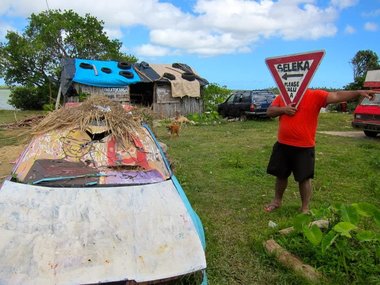

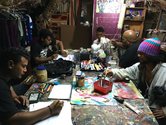
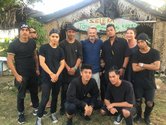


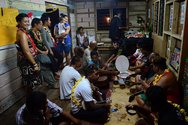



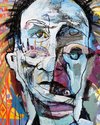

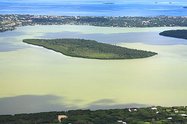

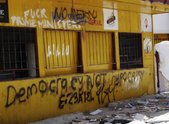
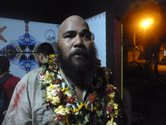
 Two Rooms presents a program of residencies and projects
Two Rooms presents a program of residencies and projects Advertising in this column
Advertising in this column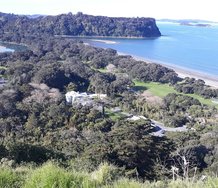
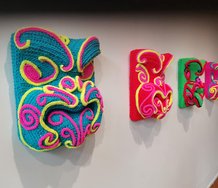

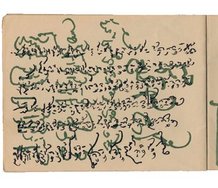
This Discussion has 0 comments.
Comment
Participate
Register to Participate.
Sign in
Sign in to an existing account.